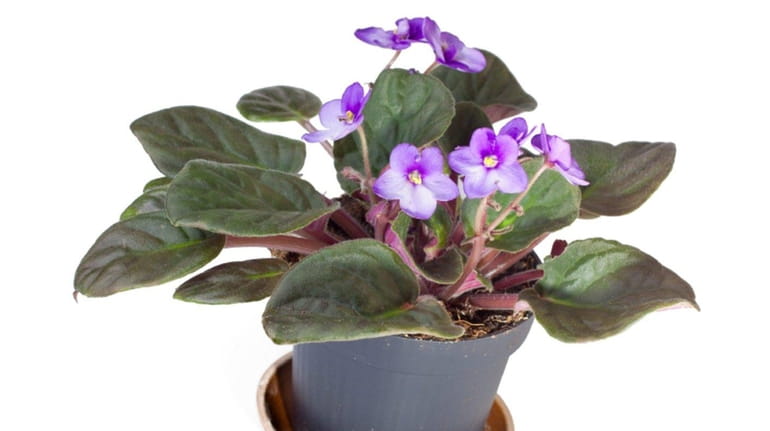Salt and soil don’t mix, plus African violet care, moving hydrangeas and ornamental grasses

African violets are cute, but they're pretty finicky customers when it comes to sun, water and soil. Credit: iStock
DEAR JESSICA:I read your article concerning poison ivy. It was very good “food for thought.” I worked at MacArthur Airport for a number of years, and I too often had to deal with poison ivy growing on the fences. I would take a shovel to expose just a little of the roots, put salt on them and let the rain do the rest of the job. Sometimes I just put salt around the base of the plant. The salt would burn the roots and kill the poison ivy for good. I also use table salt around my house to kill deep-rooted weeds. Salt used correctly is very environmentally friendly and inexpensive, compared to herbicides, and does the job.
— Alan Schneeberg,
Sayville
DEAR ALAN: You are correct in that salt kills weeds. It does so by desiccating — essentially dehydrating — plant tissue. The problem with relying on it as an herbicide, however, is that it also damages the soil, and may permanently destroy it. Not only will salt kill the targeted plant, but also anything else it contacts in the area. It’s true that the weed won’t likely grow back, but nothing else is likely to grow in that soil either, maybe forever.
I’m not entirely against sprinkling salt (rock salt is most effective) between walkway pavers or in driveway cracks, to eliminate constant cleaning up in those tiny spots. But relying on it as a weed killer in the garden is courting trouble.
DEAR JESSICA: I buy African violets with blooms and buds. I water them weekly and make sure the water doesn’t touch the leaves. They’re kept on a windowsill and turned every week, yet some just wither. What am I doing wrong?
— Chris Viola-Weiss,
Oceanside
DEAR CHRIS: I can’t be completely sure of how you’re defining “wither,” but I can tell you that African violets require specific conditions: indirect sunlight, high humidity and warmth.
Keep them out of direct sunlight during spring and summer, near a window but behind a curtain; then from about October through the end of February, give them direct light (sunlight in winter is not as strong as during spring and summer).
If leaves are spotted, it’s likely they came into contact with cold water. Use only room-temperature water on these plants.
They prefer slightly acidic soil, but do not require high fertility, so fertilize every two to three months with a 20-20-20 product.
DEAR JESSICA:My question is twofold. First, should tall grasses be cut back this month? Second, when is it best to divide and replant them?
— Bob Staats,
Patchogue
DEAR BOB: I cut back ornamental grasses in March, before they break dormancy. Although cutting them back in late fall after they go dormant won’t kill them, the top growth helps protect the roots a bit over the winter, and I like the way the strawlike plants look in the snow. Also, the beds would be too barren without them. Having said that, sometimes they start to look mangy in December, and I take them down then. In short, it really doesn’t matter too much — as long as they’re brown.
They can be safely divided in late spring or early summer, after they’ve resumed active growth.
DEAR JESSICA:I have an oakleaf hydrangea that I planted three years ago that really took off this year and is doing well in a north-facing bed, but now I need to move it. When is the best time to move it, now or in the spring? It’s beautiful, and I’d hate to lose it.
— Mary R. Kriner,
Wantagh
DEAR MARY: The only safe time to relocate an oakleaf hydrangea is when it’s dormant — during early spring or late fall.

